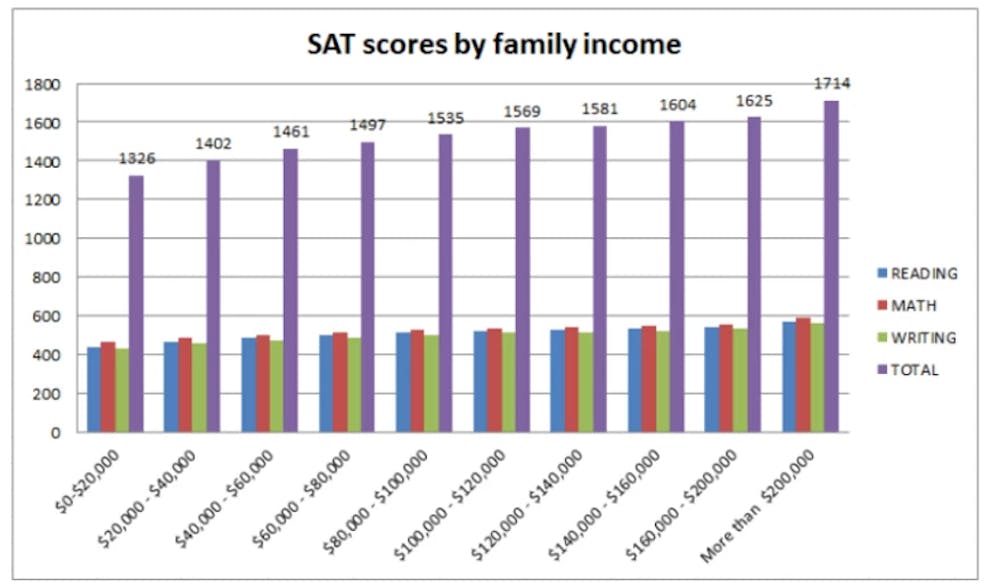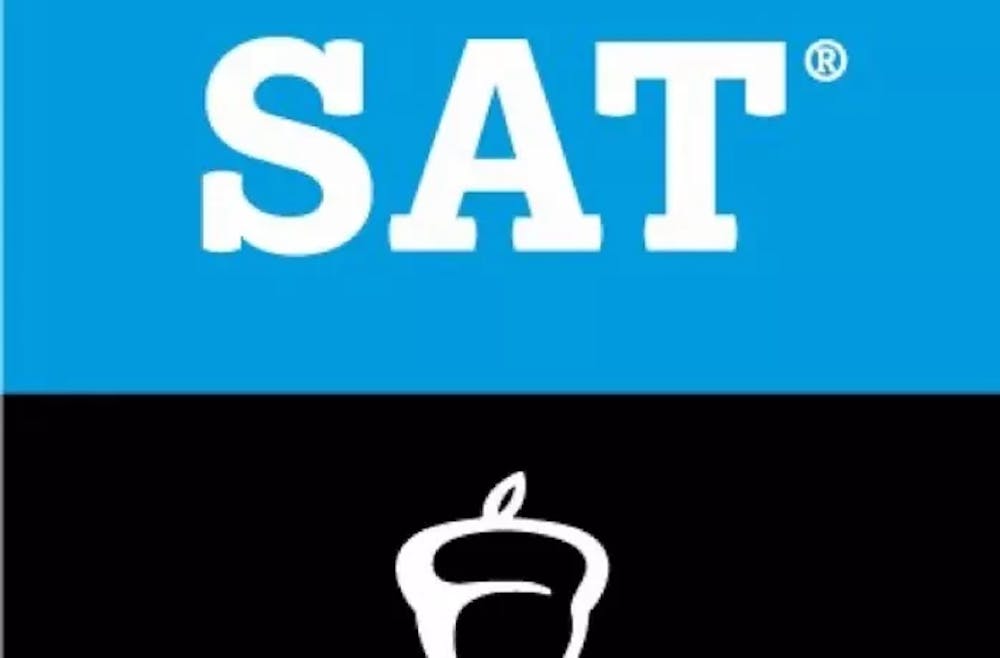Standardized tests on the surface seem like a good way for colleges to get a glimpse at an applicant. Everyone, regardless of family income, has to sit for the test and go through the same process. However, this test is far from fair. There are so many avenues that one can take to improve scoring, most of which are costly.
The SAT was first administered to high school students in 1926 to test their aptitude for learning (pbs.org), but over the years it has evolved to become more about the strategy. It forces students who want to do well to practice taking this one kind of test. One of the best ways to learn SAT testing skills is through SAT prep. This comes in many different forms: textbooks, tutors, or classes. But these come at a price. According to the PrepScholar Blog, SAT prep can cost anywhere between $50 to $2,000. Students whose families are able to afford those costs have access to all the resources needed to raise their scores.
Even without considering all the extra SAT/ACT prep that wealthier families can afford, each test is expensive. Taking the SAT with the essay portion costs $64.50; the ACT with the writing portion costs $62.50. So, in and of itself, wealthy families have an advantage because they can afford to take it repeatedly until the wanted scores are received. Whereas, students who come from families with lower income may only have one shot at the test and will have to apply to colleges using their one score whether or not it is indicative of their academic abilities.
Many studies have backed up these ideas. In 2015 Inside Higher Ed found that the lowest average scores on the SAT came from students whose family household income is less than $25,000; in contrast, those who received the highest average scores came from families with an income of greater than $200,000. According to the US Census, the average household income is $60,293, so families that fall above that have a lot more money to pay for resources for their children.

According to the Washington Post, another study in 2014 found that “students from families earning more than $200,000 a year average a combined score of 1,714, while students from families earning under $20,000 a year average a combined score of 1,326” (Goldfarb).
This data clearly shows the effect family income has on SAT scores. Acing the SAT means learning specific testing strategies rather than applying academic knowledge. To do so, it is much easier for the student to enlist the help of an expert or to use a textbook as a reference. However, these resources are expensive, which many students in America cannot afford. The SAT and ACT have grown to the point where it is no longer testing a student’s aptitude for learning; it is testing how much money a student’s family can afford to spend on the test.
https://blog.prepscholar.com/how-much-do-sat-prep-courses-cost
https://www.cnbc.com/2019/10/03/rich-students-get-better-sat-scores-heres-why.html
https://www.erikthered.com/tutor/sat-act-history.html




